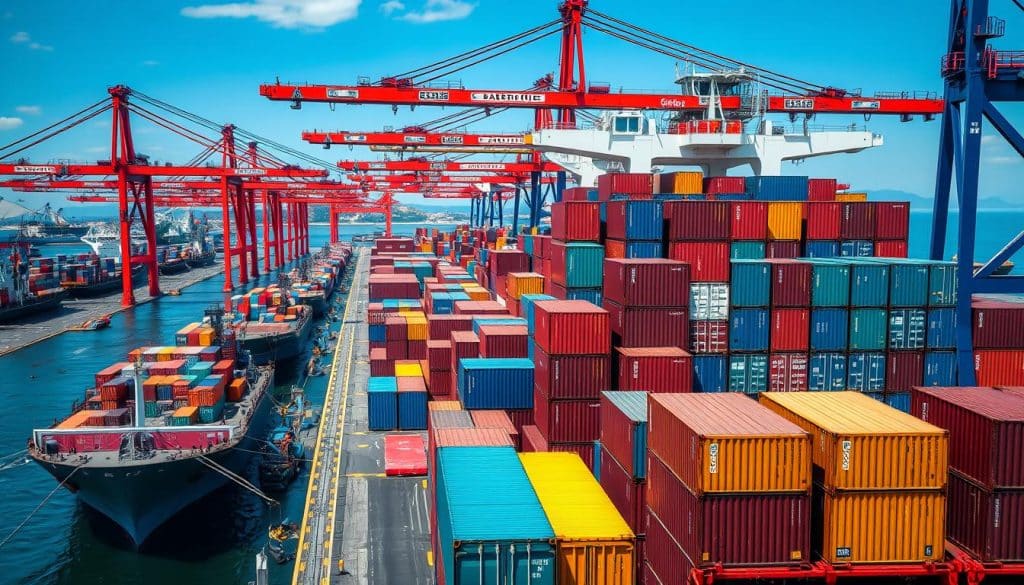International trade, the exchange of goods and services across national borders, has been a cornerstone of global economic development for centuries. As economies become increasingly interconnected, understanding the advantages and disadvantages of international trade becomes crucial for businesses, policymakers, and students of economics. This analysis explores how international trade shapes economic landscapes, creates opportunities, and presents challenges for nations worldwide.
What Is International Trade?
International trade refers to the exchange of capital, goods, and services across international borders. In 2019, global international trade reached nearly $19 trillion, with machinery, electronics, automobiles, fuels, and chemicals comprising the majority of traded goods.
International trade facilitates the movement of goods across borders, creating global supply chains
Countries engage in international trade to access resources unavailable domestically, expand their markets, and capitalize on comparative advantages. The exchange may involve physical products, services like tourism or consulting, or financial assets and investments.
Advantages of International Trade
International trade offers numerous benefits that contribute to economic growth and development. Here are the key advantages that make global trade an essential component of modern economies:

Data shows a positive correlation between trade openness and economic growth rates
Economic Growth and Development
One of the primary benefits of international trade is its contribution to economic growth. According to World Bank data, countries with higher trade-to-GDP ratios typically experience faster economic growth. Trade generates income through exports, increasing a nation’s GDP and creating a multiplier effect throughout the economy.
For example, China’s economic transformation was largely driven by export-oriented policies, helping it achieve an average annual GDP growth of 9.5% between 1979 and 2018. Similarly, South Korea leveraged international trade to transform from an agricultural economy to an industrial powerhouse, with exports accounting for approximately 40% of its GDP.
Market Expansion and Job Creation
International trade allows businesses to access markets beyond their domestic boundaries, reaching millions of potential customers worldwide. This market expansion enables companies to achieve economies of scale, reduce per-unit costs, and increase profitability.

Export-oriented industries create significant employment opportunities
The export sector also creates substantial employment opportunities. In the United States, exports supported approximately 10.7 million jobs in 2019, according to the International Trade Administration. These jobs often offer higher wages than non-export related positions, contributing to improved living standards.
Increased Product Variety and Lower Prices
Consumers benefit from international trade through access to a wider variety of products at competitive prices. Trade allows countries to import goods that may not be produced domestically due to climate constraints, resource limitations, or technological gaps.
For instance, consumers in northern countries can enjoy tropical fruits year-round thanks to imports from equatorial regions. Competition from imported goods also helps keep domestic prices in check, benefiting consumers through increased purchasing power and improved living standards.
Want to Learn More About Global Trade Benefits?
Download our comprehensive guide to international trade advantages and how businesses can leverage global markets for growth.
Disadvantages of International Trade
Despite its many benefits, international trade also presents significant challenges and potential drawbacks for economies, industries, and workers. Understanding these disadvantages is crucial for developing balanced trade policies.

Job displacement can occur when domestic industries cannot compete with foreign imports
Trade Imbalances and Economic Dependency
Trade deficits occur when a country imports more than it exports, potentially leading to economic instability. The United States, for example, had a trade deficit exceeding $480 billion in 2019, despite implementing protectionist measures.
Excessive dependence on foreign markets can make economies vulnerable to external shocks. During the COVID-19 pandemic, countries heavily reliant on imports faced critical shortages of essential medical supplies, highlighting the risks of over-dependence on global supply chains.
Job Losses and Domestic Industry Decline
While trade creates jobs in export-oriented sectors, it can lead to job losses in industries facing foreign competition. According to Economic Policy Institute research, the United States lost approximately 3.4 million jobs between 2001 and 2017 due to its growing trade deficit with China.
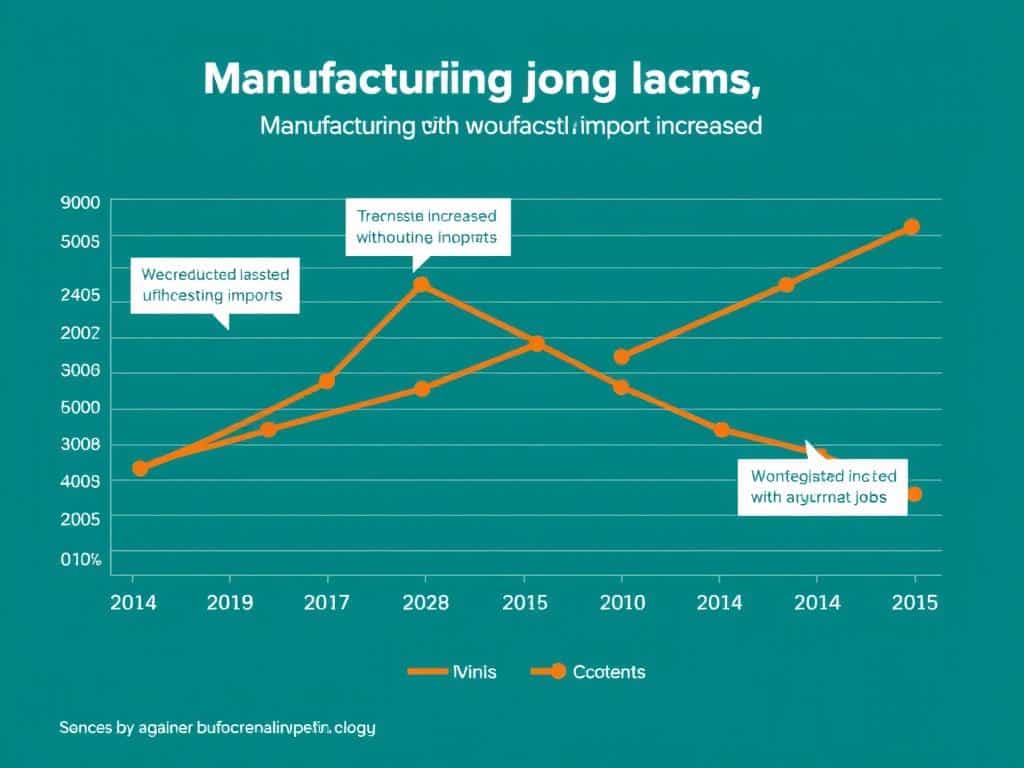
Manufacturing employment often declines as imports increase in developed economies
Domestic industries may struggle to compete with foreign producers who benefit from lower labor costs, fewer regulations, or government subsidies. This can lead to deindustrialization in certain regions, creating economic hardship for affected communities.
Environmental and Labor Concerns
International trade can contribute to environmental degradation through increased transportation emissions, resource exploitation, and the relocation of polluting industries to countries with less stringent environmental regulations.
Labor standards may also be compromised as companies seek to reduce costs by moving production to countries with weaker worker protections. This “race to the bottom” can lead to exploitation, unsafe working conditions, and suppressed wages in developing nations.
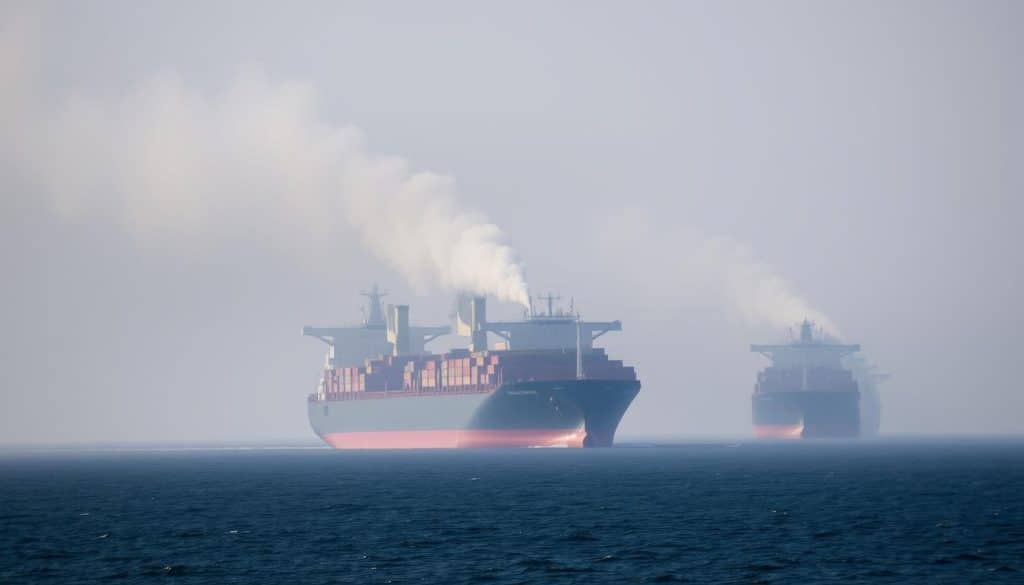
International shipping contributes significantly to global carbon emissions
Comparative Analysis: Short-Term Gains vs. Long-Term Risks
Short-Term Advantages
- Immediate access to wider variety of goods
- Lower consumer prices through competition
- Rapid market expansion opportunities
- Quick technology transfer
- Foreign exchange earnings
Long-Term Risks
- Structural economic dependency
- Erosion of domestic manufacturing capacity
- Vulnerability to global economic shocks
- Environmental degradation
- Widening inequality within nations
The balance between short-term gains and long-term risks varies significantly based on a country’s development stage, economic structure, and policy framework. Developing nations may initially benefit from export-led growth strategies but risk becoming trapped in low-value production without proper industrial policies.

Effective trade policies must balance immediate benefits with long-term economic security
Developed economies often experience immediate consumer benefits from imports but may face long-term deindustrialization if strategic sectors are not protected. The optimal approach typically involves selective trade liberalization combined with investments in education, infrastructure, and innovation to maximize benefits while mitigating risks.
Real-World Examples: Success Stories and Cautionary Tales
China’s Export-Led Growth
China represents perhaps the most dramatic example of export-led development in modern history. By leveraging its comparative advantage in labor-intensive manufacturing and gradually moving up the value chain, China transformed from an agricultural economy to the world’s largest exporter.
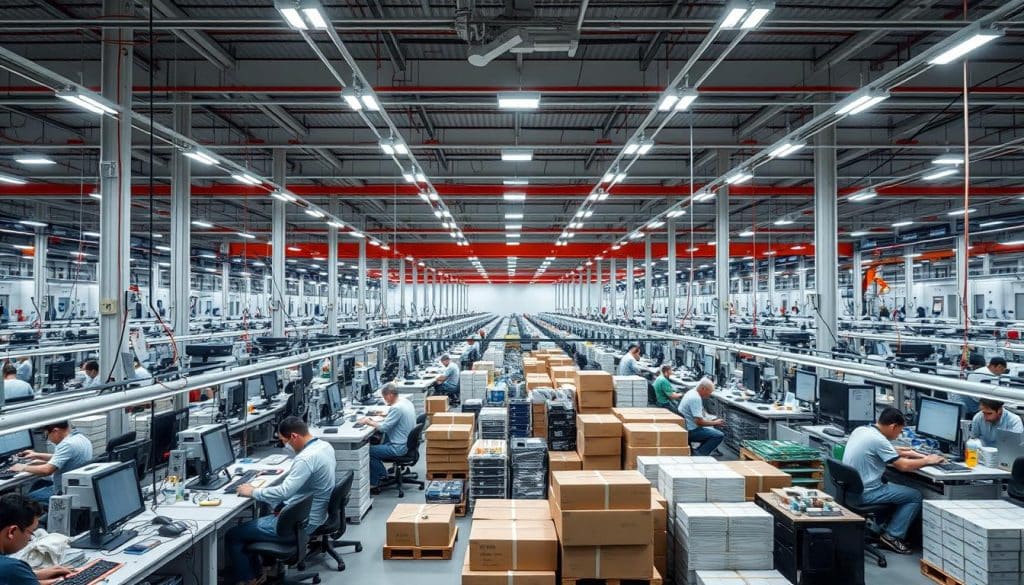
China’s manufacturing sector drove its remarkable economic transformation
However, this success came with environmental costs, labor challenges, and growing economic imbalances that Chinese policymakers are now attempting to address through a shift toward domestic consumption-led growth.
Mexico Under NAFTA
Mexico’s experience under the North American Free Trade Agreement (NAFTA) illustrates both the opportunities and challenges of regional trade integration. While Mexico’s manufacturing exports grew substantially after NAFTA’s implementation in 1994, the benefits were unevenly distributed.
Northern Mexico saw industrial development and job creation, but small-scale farmers struggled to compete with subsidized U.S. agricultural imports. This regional inequality contributed to migration pressures and highlighted the importance of complementary policies to ensure trade benefits are widely shared.

Mexico’s automotive sector expanded significantly under NAFTA
Policy Implications and Balanced Approaches
Effective trade policies must balance openness with strategic protections for vulnerable sectors and workers. Key policy considerations include:
Trade Adjustment Assistance
Programs that help workers displaced by trade through retraining, education subsidies, and relocation assistance can mitigate the negative impacts while preserving the overall benefits of trade. The United States’ Trade Adjustment Assistance program, though imperfectly implemented, represents one approach to addressing these challenges.
Strategic Industrial Policy
Rather than across-the-board protectionism, targeted industrial policies can help develop strategic sectors while maintaining general openness to trade. South Korea and Taiwan successfully used such approaches to develop competitive high-technology industries while gradually liberalizing their economies.

Multilateral trade negotiations aim to create balanced frameworks for global commerce
Environmental and labor standards in trade agreements can help prevent a “race to the bottom” and ensure that trade liberalization doesn’t come at the expense of sustainability or worker welfare. The European Union has increasingly incorporated such provisions in its trade agreements.
Stay Informed About Global Trade Developments
Download our comprehensive guide “The Complete Analysis of International Trade: Advantages, Disadvantages, and Policy Implications” for in-depth insights and case studies.
Future Trends in International Trade
Several emerging trends are reshaping the landscape of international trade and will influence how countries experience its advantages and disadvantages:
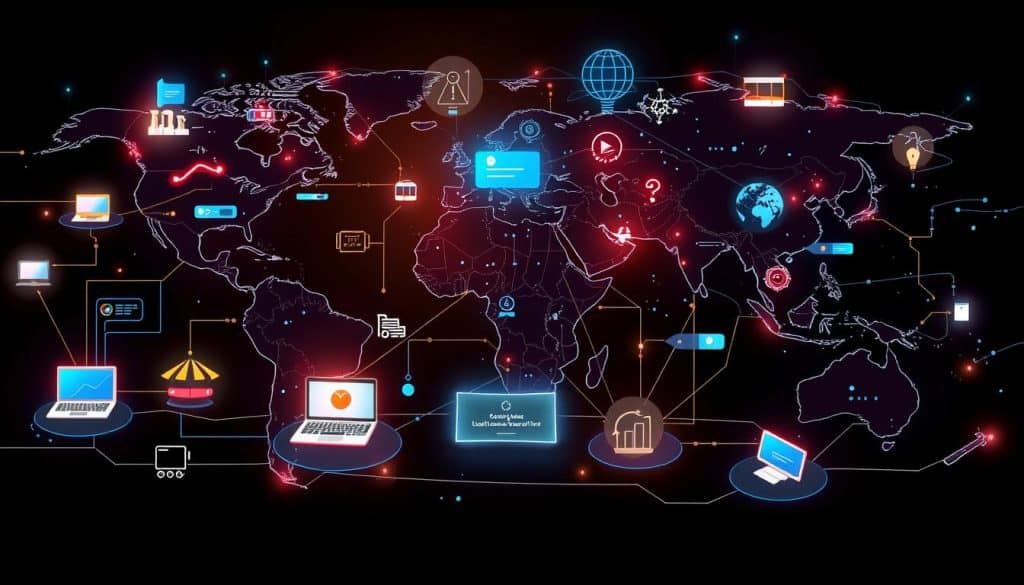
Digital trade is rapidly transforming traditional international commerce patterns
Digital Trade and Services
The rise of digital platforms is enabling even small businesses to access global markets. Services trade, particularly in digital services, is growing faster than goods trade and creating new opportunities for countries with skilled workforces. According to UNCTAD, digital services exports reached $3.2 trillion in 2019 and continue to expand rapidly.
Supply Chain Resilience
The COVID-19 pandemic exposed vulnerabilities in global supply chains, prompting companies and governments to reconsider extreme specialization and just-in-time inventory systems. Future trade patterns may involve more redundancy, nearshoring, and strategic stockpiling of essential goods.
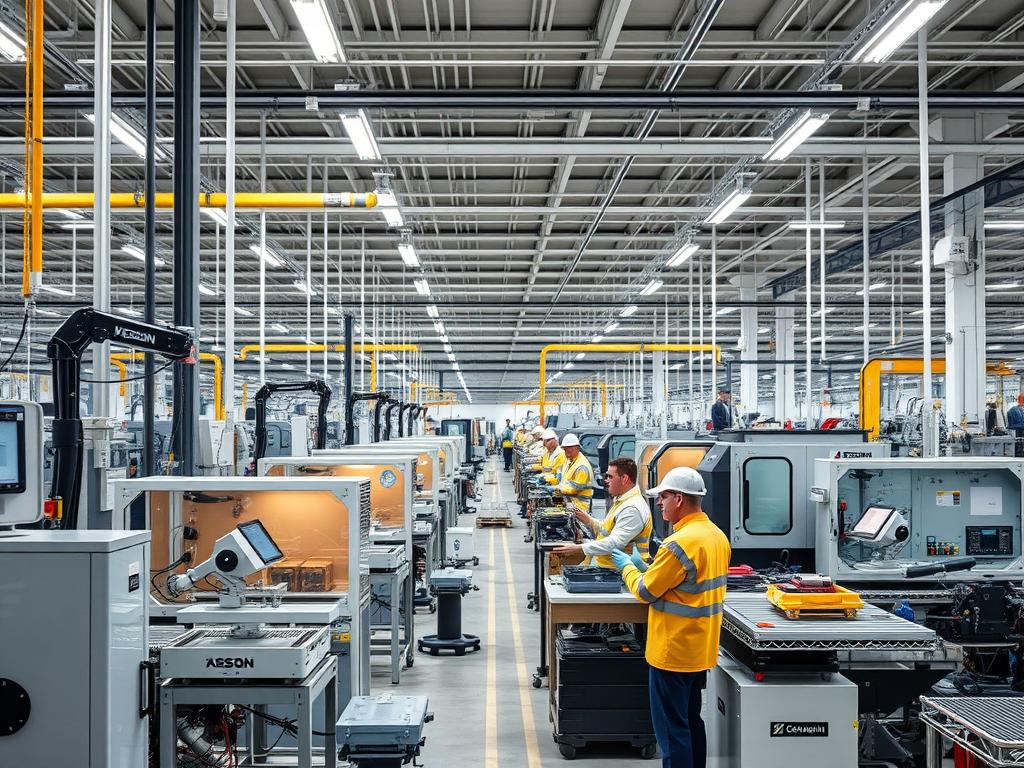
Companies are increasingly considering reshoring critical manufacturing capabilities
Climate Considerations
Environmental concerns are becoming increasingly central to trade policy. Carbon border adjustment mechanisms, like those proposed by the European Union, may reshape trade patterns by imposing costs on carbon-intensive imports. This could accelerate the transition to cleaner production methods but may also create new trade tensions.
Conclusion: Finding the Right Balance
The advantages and disadvantages of international trade reflect its transformative power in the global economy. While trade creates wealth, expands opportunities, and improves living standards, it also generates disruption, inequality, and environmental challenges that must be addressed through thoughtful policies.
The most successful economies have neither embraced unrestricted free trade nor retreated into protectionism. Instead, they have pursued strategic integration into global markets while investing in their people, infrastructure, and institutions to ensure the benefits of trade are widely shared.
As digital technologies, climate concerns, and geopolitical shifts reshape the trading landscape, finding this balance will remain essential for harnessing the advantages of international trade while mitigating its disadvantages.
Deepen Your Understanding of Global Trade
Subscribe to our newsletter for regular updates on international trade developments, policy analysis, and economic insights.
Frequently Asked Questions
How does international trade affect consumers?
International trade typically benefits consumers through lower prices, greater product variety, and improved quality due to competition. Consumers gain access to goods that may not be produced domestically and can enjoy year-round availability of seasonal products. However, consumers may also face risks from products manufactured under different safety standards or experience job insecurity in sectors facing import competition.
Why do high tariff levels restrict international trade?
High tariffs increase the cost of imported goods, making them less competitive in domestic markets. This reduces demand for those products and discourages trade. While tariffs may protect domestic industries in the short term, they often lead to higher prices for consumers, reduced export opportunities due to retaliatory measures, and overall economic inefficiency as resources remain in less productive sectors.
What is the difference between absolute and comparative advantage in trade?
Absolute advantage refers to a country’s ability to produce a good more efficiently (using fewer resources) than another country. Comparative advantage, which drives international trade, refers to a country’s ability to produce a good at a lower opportunity cost than another country. Even if a country has no absolute advantages, it can still benefit from trade by specializing in products where it has a comparative advantage.

